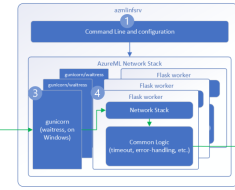
Background and purpose:
We aimed to develop and validate different machine-learning (ML) prediction models for the complete response of oligometastatic gynecological cancer after SBRT.
Material and methods:
One hundred fifty-seven patients with 272 lesions from 14 different institutions and treated with SBRT with radical intent were included. Thirteen datasets including 222 lesions were combined for model training and internal validation purposes, with an 80:20 ratio. The external testing dataset was selected as the fourteenth Institution with 50 lesions. Lesions that achieved complete response (CR) were defined as responders. Prognostic clinical and dosimetric variables were selected using the LASSO algorithm. Six supervised ML models, including logistic regression (LR), classification and regression tree analysis (CART) and support vector machine (SVM) using four different kernels, were trained and tested to predict the complete response of uterine lesions after SBRT. The performance of models was assessed by receiver operating characteristic curves (ROC), area under the curve (AUC) and calibration curves. An explainable approach based on SHapley Additive exPlanations (SHAP) method was deployed to generate individual explanations of the model’s decisions.
Results:
63.6% of lesions had a complete response and were used as ground truth for the supervised models. LASSO strongly associated complete response with three variables, namely the lesion volume (PTV), the type of lesions (lymph-nodal versus parenchymal), and the biological effective dose (BED10), that were used as input for ML modeling. In the training set, the AUCs for complete response were 0.751 (95% CI: 0.716-0.786), 0.766 (95% CI: 0.729-0.802) and 0.800 (95% CI: 0.742-0.857) for the LR, CART and SVM with a radial basis function kernel, respectively. These models achieve AUC values of 0.727 (95% CI: 0.669-0.795), 0.734 (95% CI: 0.649-0.815) and 0.771 (95% CI: 0.717-0.824) in the external testing set, demonstrating excellent generalizability.
Conclusion:
ML models enable a reliable prediction of the treatment response of oligometastatic lesions receiving SBRT. This approach may assist radiation oncologists to tailor more individualized treatment plans for oligometastatic patients.
Keywords:
Complete response; Gynecological cancer; Machine learning; Predictive models; SBRT.




